Anatolia: Cradle of world’s firsts—from Gobeklitepe to pioneering minds
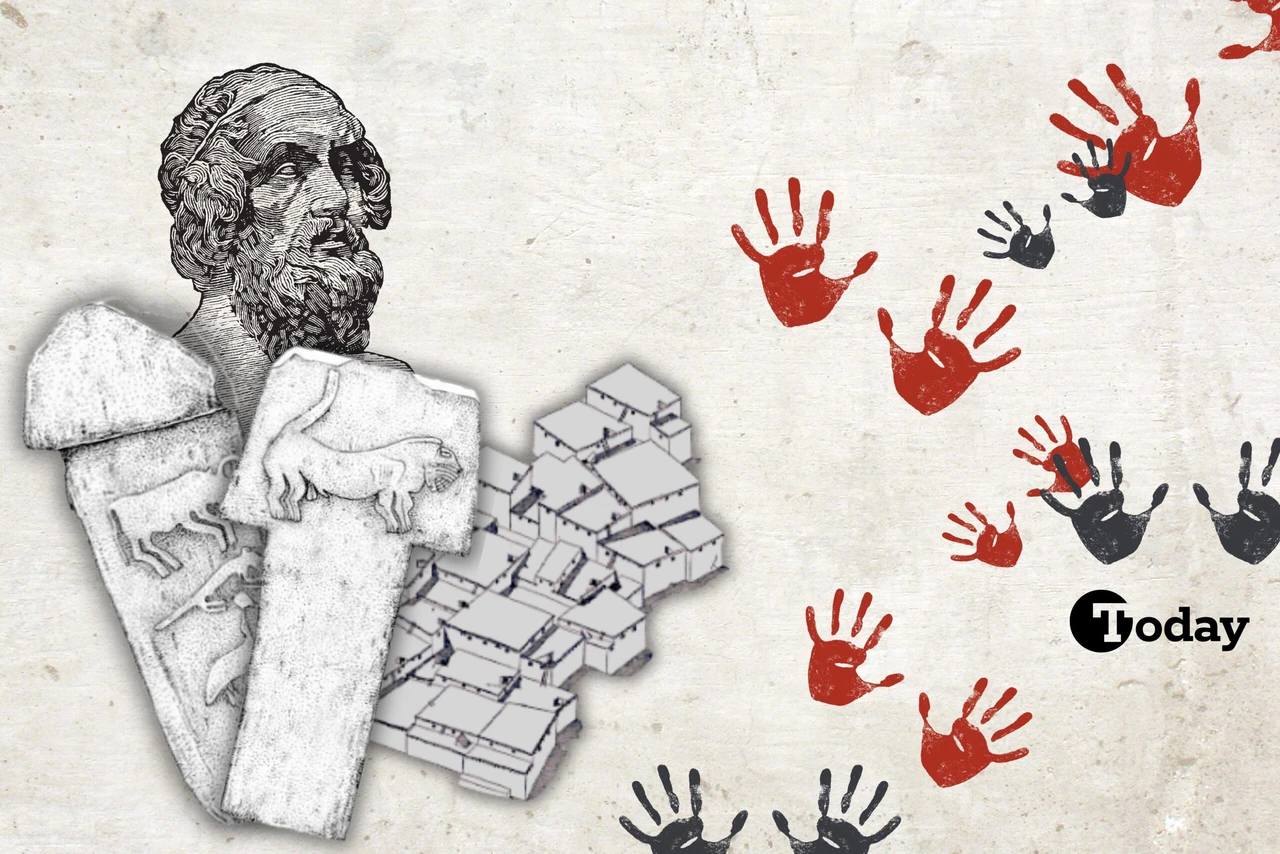 A visual consisting of sketch drawings of some of the firsts originating from Anatolia. (Created by Türkiye Today Team)
A visual consisting of sketch drawings of some of the firsts originating from Anatolia. (Created by Türkiye Today Team)
Anatolia has been the cradle of a vast cultural and intellectual heritage since ancient times, playing a pioneering role in shaping modern Western civilization.
Today, we are exploring Anatolia’s contributions to Western thought and science, the influence of prominent figures from this region, and how we can better understand and appreciate this legacy.
From the world’s first cult center to the first planned city; from the invention of money to the first stock exchange building; from the first battle between East and West to the world’s first peace treaty—Anatolia has been home to countless groundbreaking events and innovations. Moreover, from Homer and Thales to Herodotus and Galen, many pioneering scientists and thinkers who left an indelible mark on human history emerged from Anatolia.
However, today, their legacy is not sufficiently embraced or promoted. In this article, we delve into the profound contributions of these ancient figures and their lasting impact on contemporary thought and culture.
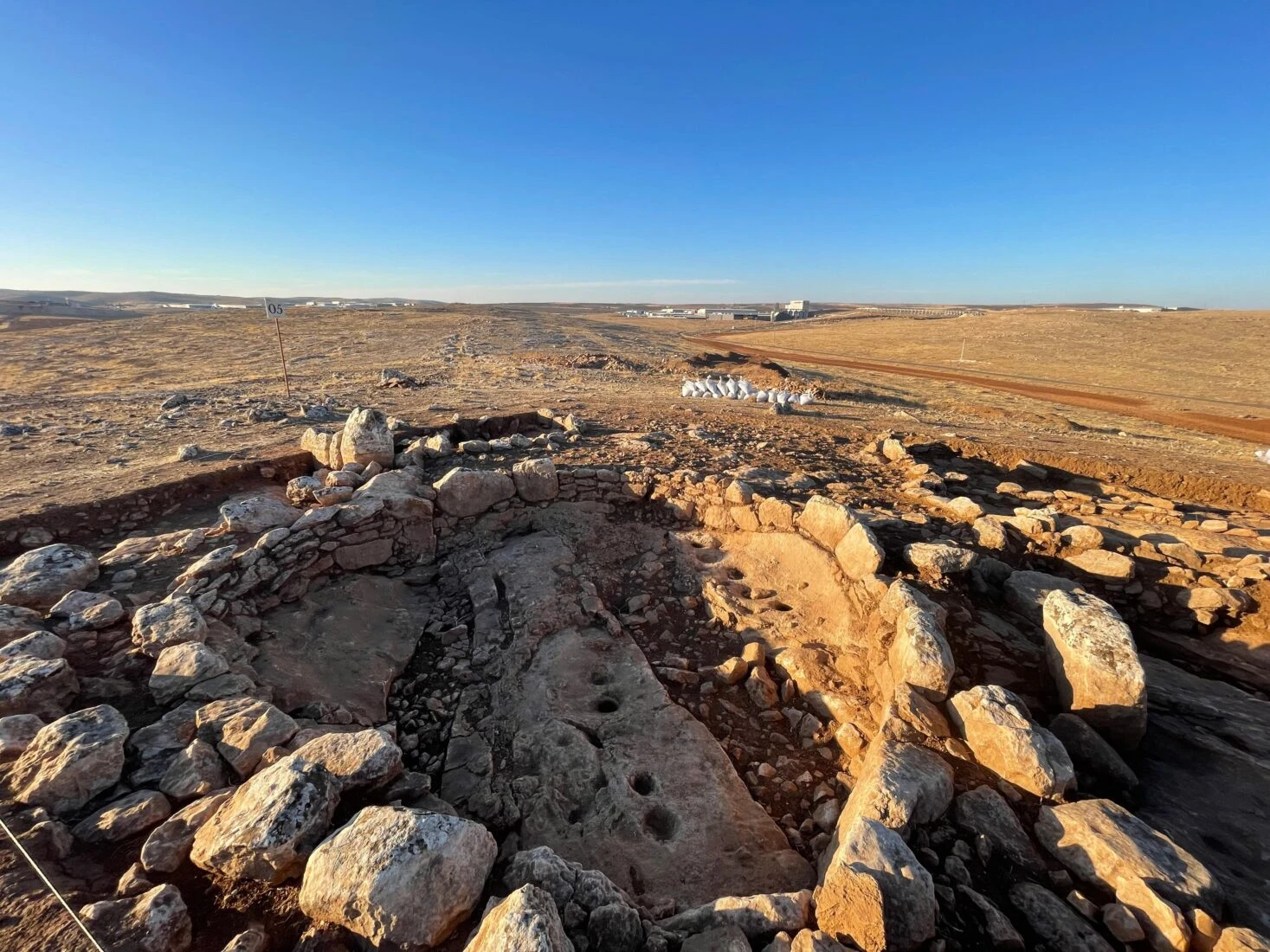
Cakmaktepe: Birthplace of Neolithic civilization
Excavations at Cakmaktepe, situated in the Eyyubiye district, began in 2021 under the direction of Associate Professor Fatma Sahin. Pre-excavation surface material suggested that Cakmaktepe could represent a settlement older than both Gobeklitepe and Karahantepe. Although radiocarbon (C-14) dating is still pending, Sahin explains that the chipped stone artifacts date the site to an era as early as 10,000 B.C.
The archaeological site of Cakmaktepe has been identified as a settlement that predates Gobeklitepe and other “Tas Tepeler” (Stone Mounds) by nearly 1,000 years.
As part of the Tas Tepeler Project, Cakmaktepe offers remarkable insights into the early Neolithic period, redefining the historical narrative of humanity’s first settlements. It is also believed to be one of the earliest sites where agriculture was practiced in Neolithic life.
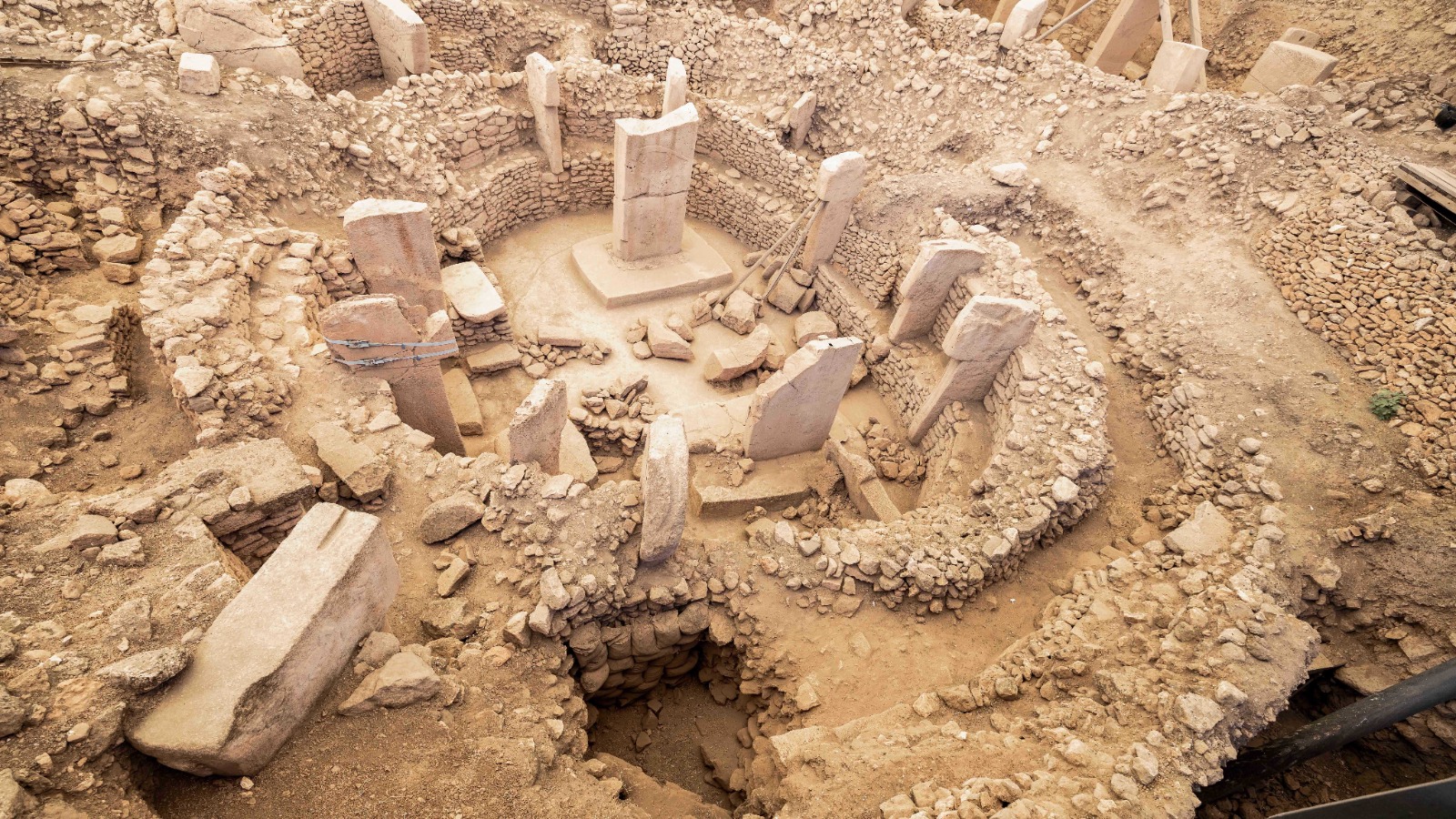
Gobeklitepe: World’s oldest communal complex
Gobeklitepe, known as the world’s oldest cult center and communal complex, is located in the Germus mountains of south-eastern Anatolia. It presents monumental round-oval and rectangular megalithic structures erected by hunter-gatherers in the Pre-Pottery Neolithic age between 9,600 and 8,200 B.C.
These monuments were probably used in connection with rituals, most likely of a funerary nature. Distinctive T-shaped pillars are carved with images of wild animals, providing insight into the way of life and beliefs of people living in Upper Mesopotamia about 12,000 years ago.
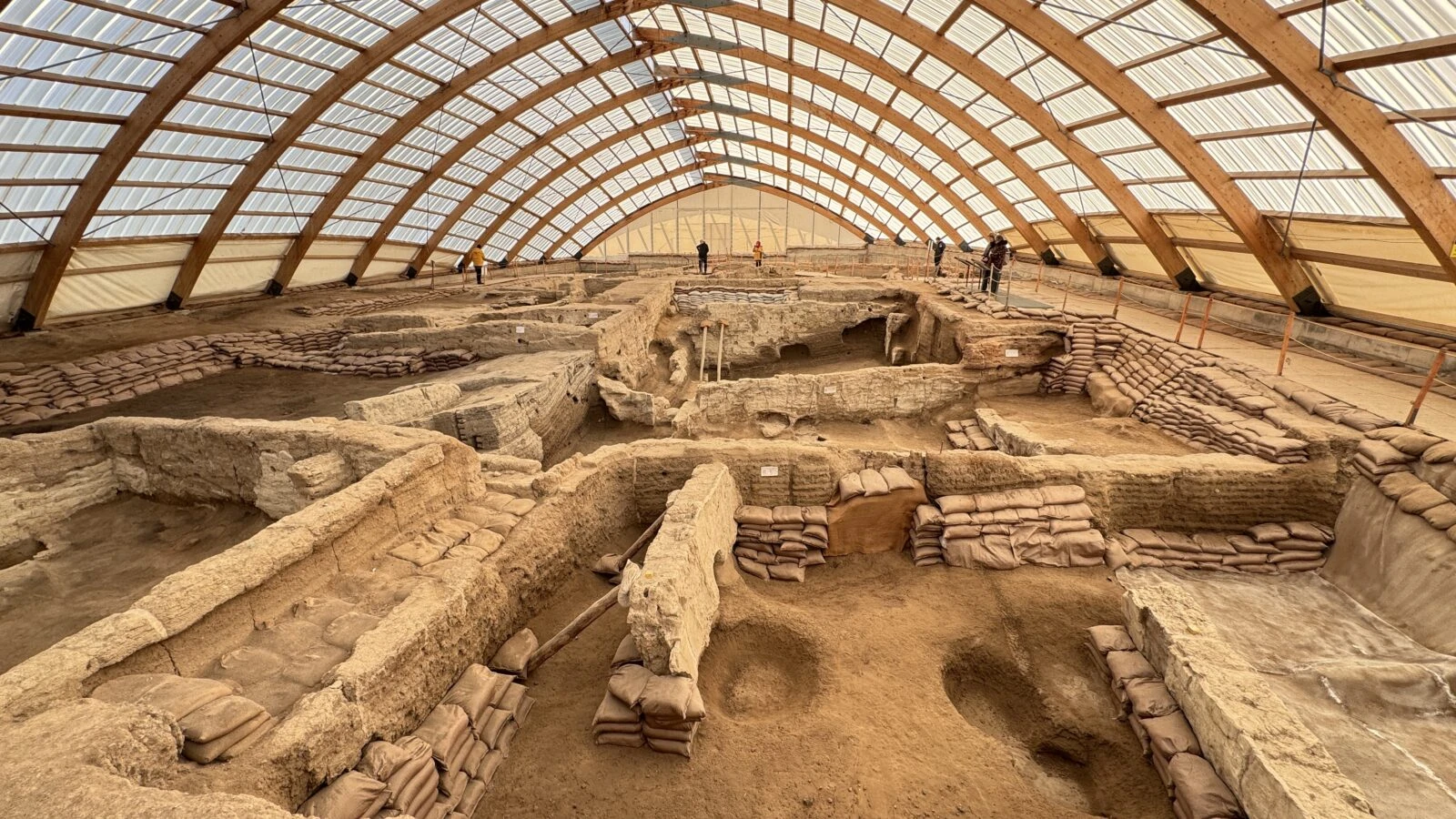
Catalhoyuk: First city in human history
Some 9,000 years ago, people across different parts of the world were struggling to survive. The total global population was under 5 million, with a small community transitioning to a settled lifestyle, living in the same place for 1,400 years. This marks the site as one of the earliest urban settlements in human history.
Here lies Catalhoyuk, a Neolithic settlement, which became the most populous settlement at the end of the Stone Age. Known for its incredible archaeological wealth, Çatalhöyük was home to around 8,000 people who lived in houses without doors, entering only through rooftops.
Catalhoyuk, as a pivotal site in the Neolithic era, offers an invaluable glimpse into early human life, offering unparalleled insights into social structures, daily life, and early architectural innovations.
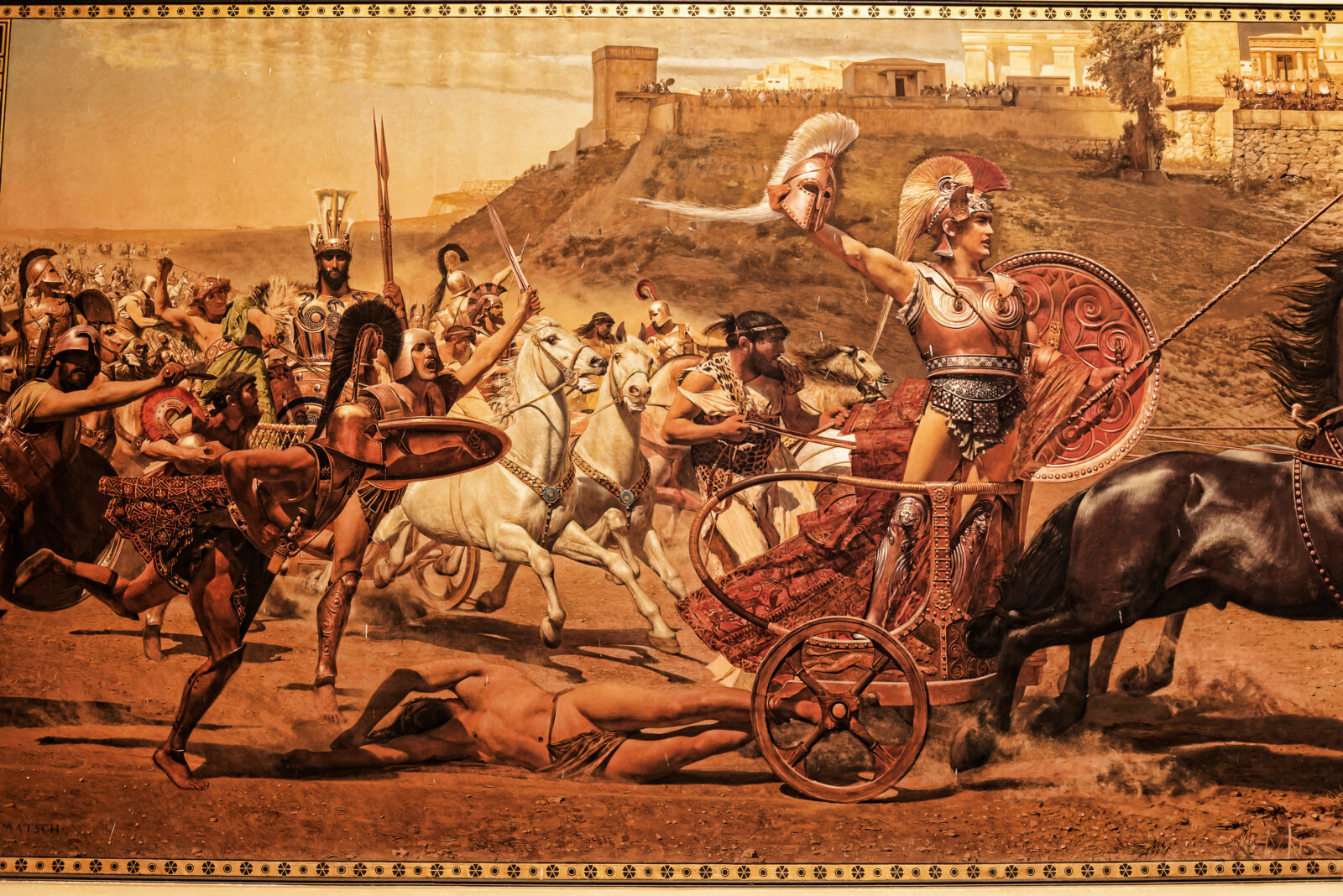
Trojan War: First clash of East and West
The first clash between the Eastern and Western worlds occurred during the Trojan Wars. According to Homer’s epic “The Iliad”, this 10-year-long conflict ended in victory for the Achaeans, representing the Western world. Archaeological findings suggest that this initial great battle took place between 1,240-1,230 B.C. Recent research indicates that the city of Troy, the site of these wars, corresponds to the VII-a layer of Troy, where a thick layer of ash was found, indicating that the city was burned by the Achaeans.
The second round of the East-West conflict occurred during the Greco-Persian Wars, where the Greek city-states represented the West and the Persians represented the East. This war, fought between 490-479 B.C., is most extensively described by the great historian Herodotus. Once again, the Western world emerged victorious.
The third major struggle between East and West in ancient history took place between Alexander the Great and the Persian Empire. Despite his brief 13-year reign, Alexander conquered all of Persia, stretching from the Aegean coast to the Indus Valley in India, and brought an end to the Persian Empire.
Subsequent conflicts between the East and West have largely taken the form of religious wars, with the Crusades being one of the most striking examples.
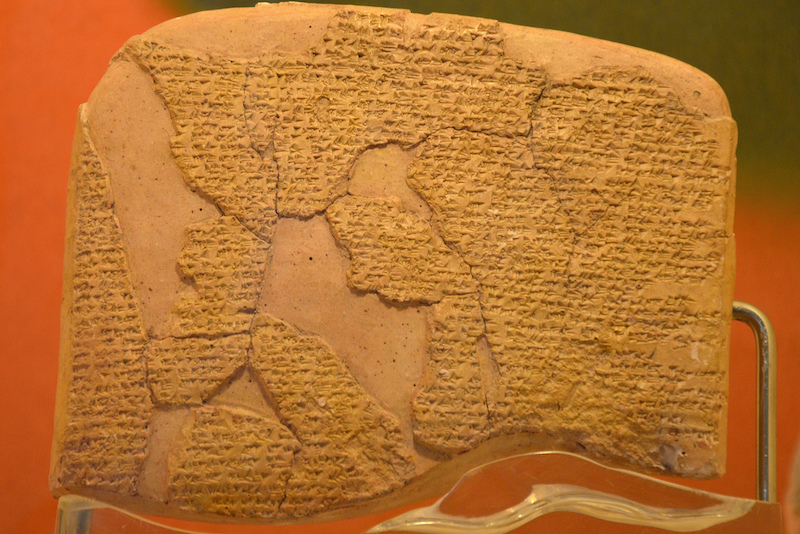
Kadesh Peace Treaty: World’s first international peace agreement
The Treaty of Kadesh stands as the oldest international agreement based on the principle of equality in world history. In 1,274 B.C., following a great battle between Egyptian Pharaoh Ramses II and Hittite King Muwatalli II, the two powers chose peace and signed the treaty, which was later sealed by King Hattusili III after Muwatalli II’s death. The treaty included provisions for mutual assistance and support between the two nations on equal terms.
A noteworthy detail is that the treaty was also sealed by Hittite Queen Puduhepa. Written in the Akkadian language using cuneiform script, copies of the treaty have been found on clay tablets in Hattusa and on temple walls in Egypt. Recognized as the foundation of modern diplomacy, a replica of this treaty is displayed at the United Nations Headquarters in New York.
The original clay tablet version of this historic document, discovered during excavations in Hattusa, is now on display at the Istanbul Archaeological Museums for visitors to explore.

Invention of coinage in Anatolia
The first minting of coinage is believed to have occurred in the seventh century B.C. in Anatolia by the Lydians. The Lydian coin, which is considered the first metal currency in history, was struck using a hammering technique. A movable upper die was placed on a fixed lower die, and coins were minted by striking them with a hammer.
The fact that Anatolia is the birthplace of the first coinage holds significant importance in the history of civilization. This dominance continued throughout history. The invention of money marked a pivotal moment in human development.
According to Jack Weatherford’s “The History of Money,” the first form of money was bartering goods. In the early stages, people exchanged goods directly, for example, a farmer might trade wheat for sheep from a shepherd. However, the barter system had its issues, such as the unequal value of goods leading to disputes and restricting trade.
To resolve these problems, money was invented. Money became a tool to measure the value of goods and facilitate their exchange. The invention of money made trade easier and allowed people to meet their needs more effectively.
While there is no definitive answer to who invented money, it is widely accepted that the Lydians were the first civilization to use it. In the seventh century B.C.E., they minted coins from gold and silver. These coins, similar to modern-day coins, had specific weights and shapes, often featuring the portraits or symbols of Lydian kings.
The invention of money was widely adopted by other civilizations, and it played a key role in the development of trade and economy.
The establishment of the world’s first major mint took place in Istanbul’s Simkeshane by Sultan Mehmed II.
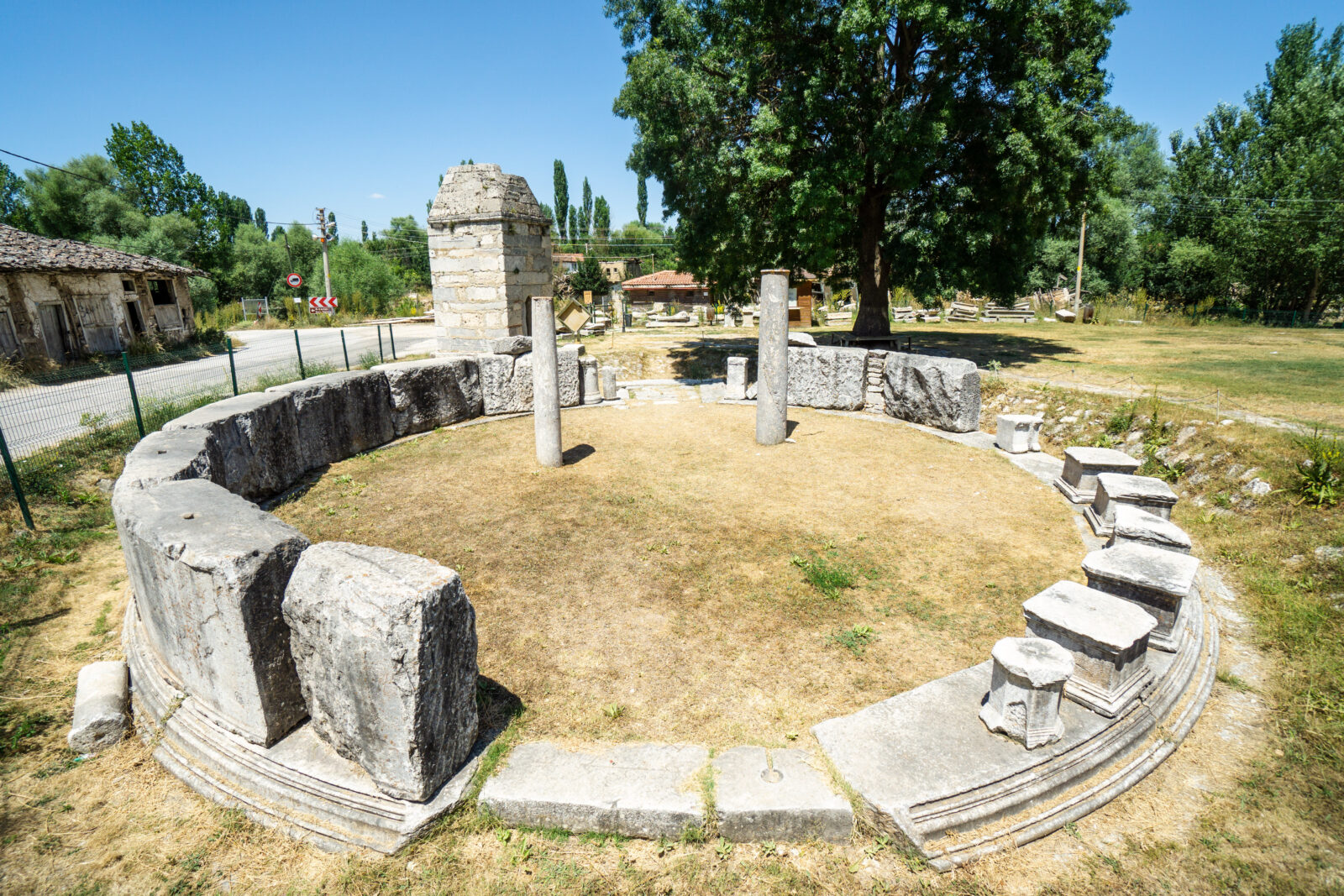
Aizanoi: World’s first stock exchange
Aizanoi, located in Cavdarhisar, Kutahya, houses one of the world’s first stock exchange buildings, dating back nearly 1,750 years. Initially used as a food market (Macellum) in the late second century A.D., the building also featured inscriptions with the price lists of goods established by Roman Emperor Diocletian in 301 A.D. to combat inflation. These inscriptions, carved into stone blocks, detailed fixed prices for various goods, including slaves, horses, and other commodities, in an effort to stabilize the economy.
The structure served as both a marketplace and a location for trading activities, with the Emperor’s decree establishing maximum price limits to control inflation. Despite the law, it ultimately failed due to merchants resorting to hoarding and creating artificial shortages. The decree was abolished by the early fourth century, and market forces once again dictated prices. A similar inscription was later discovered in Aphrodisias, marking the significance of Aizanoi in the history of economic regulation.
This ancient site stands as one of the earliest examples of a stock exchange, where economic principles were applied to ensure price stability in Roman markets.
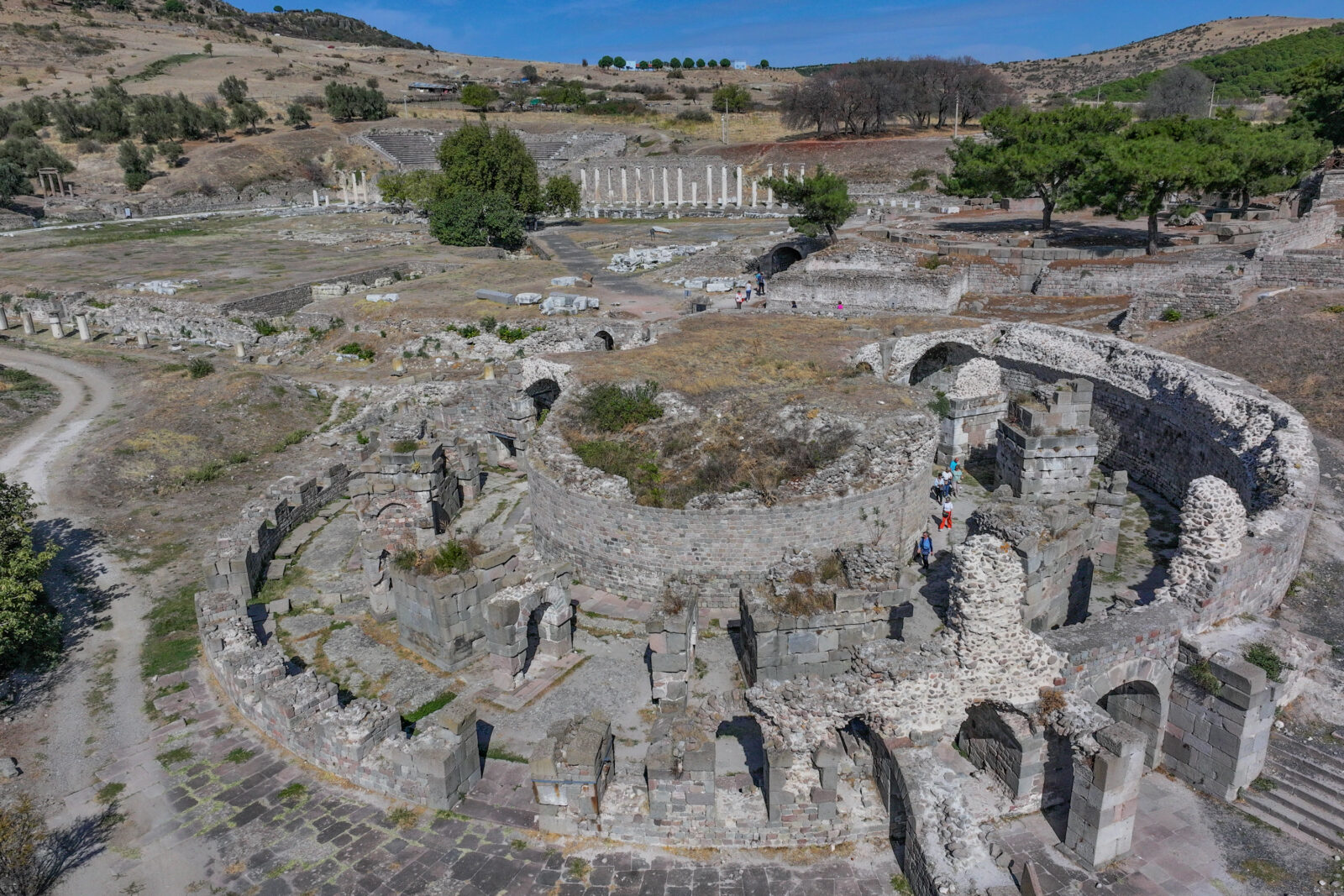
Asclepieion: World’s first healing center
As an institution focused on promoting health, we believe it’s valuable to talk about the world’s first hospital. Asclepieion, a multifaceted hospital from the Hellenistic period, was built in the fourth century B.C. in present-day Bergama. For 900 years, it treated patients from all over the world and was named after the god of healing, Asclepius.
Architecturally significant, Asclepieion was also the first example of hospital design. It was built around a sacred water source, which also served as a temple. The hospital complex featured sleep rooms, sacred springs, and pools. The treatment building, a circular structure with an 18-meter diameter, was supported by a load-bearing wall.
Notably, Asclepieion pioneered psychological treatments with its sleep rooms, where patients were induced into a sleep state and their dreams were interpreted by physicians to provide healing. This makes it one of the first hospitals to offer psychological therapy.
Another important feature of the hospital’s architecture is the “propylaeum,” a space where patients were examined, similar to today’s outpatient clinics.
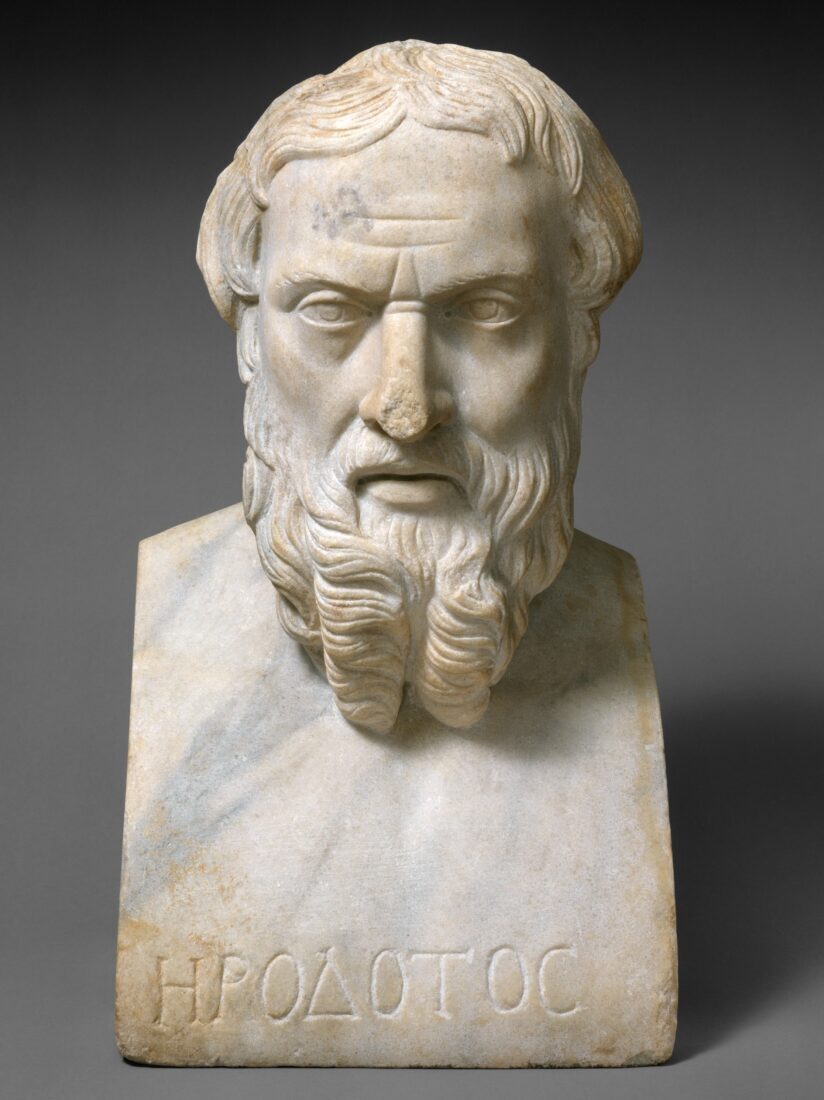
Pioneering scientists from Anatolia
· Homer (eighth century B.C., Smyrna): The author of the “Iliad and “Odyssey”, foundational works of Western literature.
· Thales (624-546 B.C., Miletus): A pre-Socratic philosopher who predicted solar eclipses and laid the groundwork for geometry.
· Anaximander (610-546 B.C., Miletus): Introduced the concept of the “infinite” and created one of the first world maps.
· Herodotus (484-425 B.C., Halicarnassus): Known as the “Father of History” for his work “Histories”.
· Galen (129-199 A.D., Pergamon): A pioneering physician whose works influenced medicine for centuries.
· Hippodamus (498-408 B.C., Miletus): Hippodamos, the fifth-century B.C. architect from Miletus, is known as the “Father of Urban Planning.” He developed the grid plan for cities, emphasizing order and functionality. His Hippodamian Plan, with intersecting streets forming a grid, became the basis for modern city planning.
· Strabo (64 B.C. – 24 A.D., Amasia): A geographer whose work “Geography” compiled ancient geographical knowledge.
Anatolia, with its ancient heritage, has significantly influenced the development of Western civilization, contributing to numerous foundational concepts in science, philosophy, and culture. From the world’s first cult center at Göbeklitepe to the establishment of the earliest known cities and the invention of money, Anatolia has been a cradle for transformative innovations.
Pioneering figures such as Homer, Thales, Herodotus, and Galen emerged from this region, leaving lasting marks on literature, philosophy, and medicine. Sites like Catalhoyuk and Aizanoi reveal ancient practices that laid the groundwork for modern society, such as urban planning, economic systems, and health care. Despite these contributions, their legacies are often overlooked, but they continue to shape contemporary thought and culture in profound ways.



